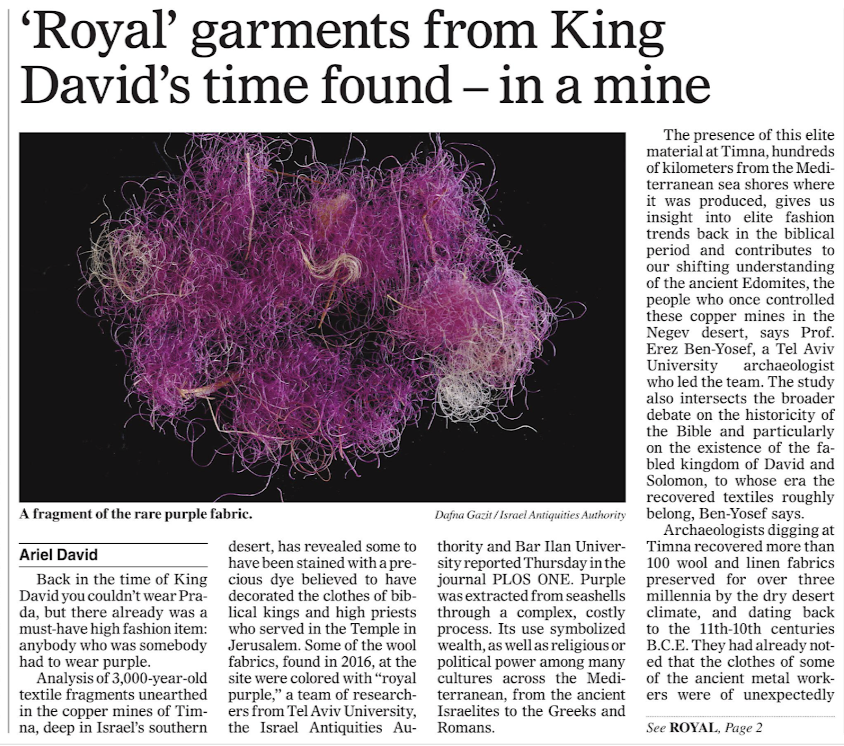Much has been written about the Israeli Absorption Ministry’s now-aborted ad, asserting that Israelis should not marry American Jews and reside in this country because their kids will grow up observing Christmas instead of Hanukkah. See my prior posting, including links to Jeffrey Goldberg's posting which exposed this quintessentially chutzpahdik ad. Following a nearly unprecedented avalanche of outrage from American Jewish leaders, including groups who typically give carte blanche to far greater affronts, the Netanyahu government wisely pulled the video from YouTube on Friday. As Akiva Eldar wrote in Ha’aretz:
For several long months, the (mostly self-appointed) "leaders" in the U.S. community have ignored the unbridled incitement launched by Israel against human rights organizations, the Supreme Court and the media. As far as is known, the federations have not sent protest letters to the prime minister to express dismay about the rise of violence and racism toward Palestinians in Israel and in the territories. The Anti-Defamation League has said nothing about the exclusion of women soldiers at Israel Defense Forces events. The pro-Israel lobby AIPAC passionately defends settlement policies which are shutting the door to a two-state solution. Thus everything is all right - until the ethnocentric wave which engulfs Israel crosses the ocean, and throws cold water on their egos. For many long years a group of Jewish philanthropists and activists - some of them with right-wing, conservative outlooks, others rank opportunists - has been throwing fuel on the fire of the Israeli-Palestinian dispute that threatens to extinguish Israel's democracy.
Although the offensive video is no more, here are some follow-up reflections:
At a Bat Mitzvah last Shabbat morning, I asked a random sampling of about 50 kids if they knew what Hannukah is. All did. So the fact that the kid in the video, when asked what holiday it is by the Skyping grandparents (with a lit menorah just behind them), said “Christmas,” is ludicrous. Not that I’m so thrilled at the excessive inflation of Hanukkah’s importance over here, but believe me, Bibi, Hanukkah is alive and well among American Jewish kids.
Assimilation does present challenges, to be sure, but growing up in America does not necessarily or even typically lead to a one way ticket out of Jewish identification. For that we can thank, in large part, the Israeli government itself, whose contributions to the successful Birthright Israel project have been crucial to furthering the cause of keeping our kids Jewish.
I thought we had gotten beyond the efforts to de-legitimize the Diaspora. But the culture wars that infect both America and Israel internally have also impacted the Jewish people globally. Israelis look at American Jews and fear the lethal impact of assimilation on their Jewish soul. American Jews look at Israel and fear that occupation has done the same. One side sees excessive tolerance, a fatal ecumenicism blurring the lines between Jews and the gentile world, and the other sees a fatal chauvinism, a triumph for an extremism fostering nightmares of a Taliban-like takeover of a faith tradition that was built on tolerance.
Also, who’s to say that Israelis are so Jewishly literate? We often have Israeli soldiers visit our community – they are the best and the brightest. As a matter of courtesy, we offer some of them aliyot to the Torah. Almost none accept. Very few know what an aliyah is or how to do one (and a few refuse to take one in a non Orthodox setting). If the situation on the video was reversed and an American Jewish grandparent Skyped a grandkid in Jerusalem, would that child know that in America, it’s OK for a woman’s face to appear on a billboard?
And how can the Absorption Ministry bemoan the Americanization of Judaism, when Israel has itself become so assimilated to American culture. Those ascending to Jerusalem for the first time are greeted by McDonalds golden arches glowing down from Mevasseret, miles before before the road grants them their first view of the other holy sites. When the biblical Jacob and his family became the first Yordim to return to the Land, they brought along Laban’s household idols; the purity of the indigenous faith was contaminated by diaspora syncretism long before McDonalds (granted, a Kosher McDonalds) opened at the Harel Mall. I can just imagine Rachel sneaking through the customs line at Ben Gurion with her imported goodies like so many returning Israelis have done since.
I follow the Religion and State in Israel blog, a weekly review of media coverage on issues of religion and state in Israel, unaffiliated with any organization or movement. Here are some of the headlines appearing in THIS WEEK’S digest. I repeat. These articles have come out JUST THIS WEEK.
High Court rejects petition over civil marriage
The High Court of Justice made clear Monday it would not accede to the petition filed by numerous progressive and pluralist groups asking for an injunction against the government to institute a framework for civil marriage in Israel.
Israeli women fight back against Jerusalem billboard vandals
Jewish women in the Britain and the US are being urged to send photographs of themselves holding signs saying "women should be seen and heard" in a campaign against efforts by the ultra-orthodox to remove female images from advertising billboards in Jerusalem.
In Israel, women’s rights come under siege
“In the past two years or five years, it’s just deteriorating,” said Shira Ben-Sasson Furstenberg of the liberal New Israel Fund, which has launched a campaign to combat the “erasure” of women from public advertising. “The Haredi are having more and more say about how our lives are in Israel.”
Clinton astonished by exclusion of women from public spaces; warns of Israel's eroding democratic values
Clinton related that she had read a day before in The Washington Post an article by Ruth Marcus, called "In Israel, Women's Rights Come Under Siege," which detailed examples of the exclusion or boycotting of women, including incidents where IDF religious soldiers have boycotted events in which women sang, and the segregation of women on some bus routes, in contravention of Supreme Court decisions.
Knesset committee to tackle IDF's gender issues
A Knesset committee will convene in the next few weeks to deal with the IDF's failure to implement a report calling for full equality between men and women in the military.
Women Barred From Funerals in Israel
The troubling phenomenon of excluding women from cemeteries in Israel appears to be getting worse.
Number of gender-segregated religious schools in Israel tripled during past decade
Gender segregation is in effect at 65 percent of the state-run religious elementary schools in Israel, according to data obtained by Haaretz from the Education Ministry's elementary school supervision department.
Love, Marriage, and the Israeli Rabbinate
For many Israelis, Tzohar is the spoonful of sugar that makes the bitter pill of dealing with the official rabbinate palatable. However, it seems clear that increasing numbers of them—including Orthodox Israelis—would prefer never to have to deal with it in the first place, even with Tzohar as a buffer: They would prefer, that is, to have the oppressive and despised rabbinate be removed altogether, whether because they do not share its values or its interpretations of Jewish law, or because they feel that moderns states should stay out of ecclesiastical business.
The people's IDF is turning into the rabbis' IDF
Haaretz Editorial www.haaretz.com December 1, 2011.
The decision by the Israel Defense Forces senior command to freeze implementation of the Segev Report, which recommended establishing full equality among men and women in the army is another aggravating example of the IDF's continuing capitulation to the demands of religious extremist rabbis and officers.
IDF freezes implementation of report calling for gender equality
The Israel Defense Forces has effectively frozen implementation of a report that called for full equality of service between men and women.
Jerusalem center goes to extreme measures to help Russian immigrants prove their Jewishness
Based in Jerusalem, the six-year-old [Shorashim center] serves as an international investigation agency, which, by doing intensive research and establishing a wide network of contacts, has helped hundreds of young people from the former Soviet Union prove their Jewishness to the satisfaction of the rabbinic courts, enabling them to get married without having to go through a conversion or marry abroad. …Rabbi Shimon Har-Shalom estimates [of the 750,000 FSU immigrants listed as Jews] between 150,000 and 200,000 will be forced to prove their Jewishness at some point, while some 20,000 of those with "no religion" are actually Jewish and would be able to prove it.
Past ARZA president, wife warn threats to Israeli pluralism
Resa Davids described how her granddaughter’s planned bat mitzva by the Dead Sea had to be moved because not a single hotel in the area would permit a woman to read from the Torah on their grounds. “The threat was if they allowed this child to read Torah, they would lose their hashgacha (kosher certification),” she said. Asked if she equated that to blackmailing the hotel owners, she replied, “exactly.”
I’ve experienced something similar.
When I was on the “March of the Living” two years ago, my mostly non-Orthodox group stayed in a nice Youth Hostel near the Biblical Zoo in Jerusalem. Our group arranged to have access to the hostel’s synagogue, a simple meeting room with an ark, for a private Kabbalat Shabbat service. No other group was in there at the time. The Orthodox members of our group decided to daven with a mechitza in another location in the building – it was an arrangement that worked well throughout our trip. About ten minutes into our egalitarian service, our group leader came up to me – as I was leading the service – and said that the hostel’s manager had told him that our service cannot continue unless we separate the boys from the girls.
Now this was a group of seventy teens who were, for the most part, experiencing Israel for the first time. Just days before we had cried at Auschwitz and stood silently by the remnants of the Warsaw Ghetto. They were exhilarated to be in Israel and I was trying not to douse their enthusiasm by interjecting the sorry state of Israeli pluralism into their experience. So rather than tell this group that this state-run hostel was hostile to the way they pray, I looked for an escape hatch – literally. There was a door in the back of the room, leading to a large outdoor patio overlooking the city. The weather was perfect, and I had planned to take them outside for Lecha Dodi anyway, so I stalled for time until we got there (as my group leader stared at me nervously, I stared back defiantly), and then, as we reached Lecha Dodi, we danced out the door and onto the patio, where we danced and prayed for the remainder of the service.
So I thank the Absorption Ministry, not for opening a wound, but for opening a dialogue on what kind of Judaism we wish for our grandchildren and where it is best being nurtured right now. My hope is that both America and Israel will be places where all our kids will be proud observers of Hanukkah, and where they will learn to love their neighbors as themselves.

















